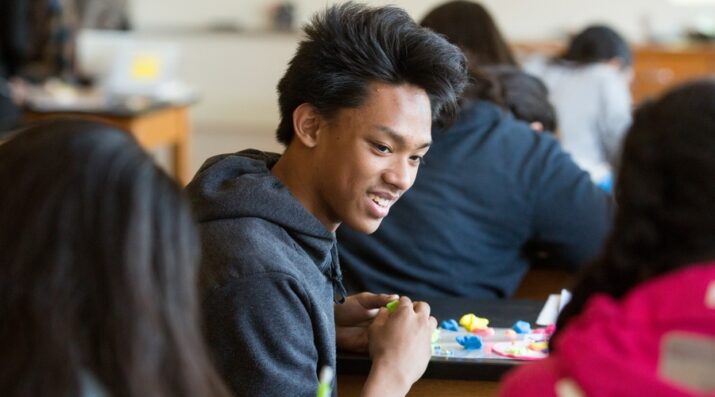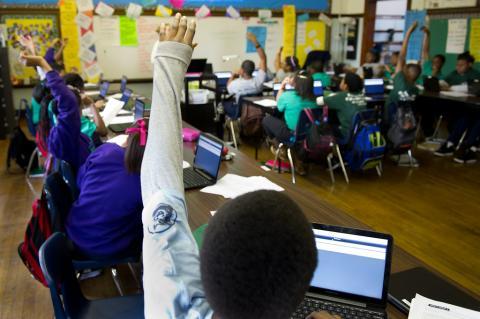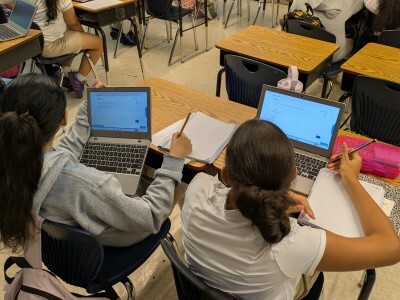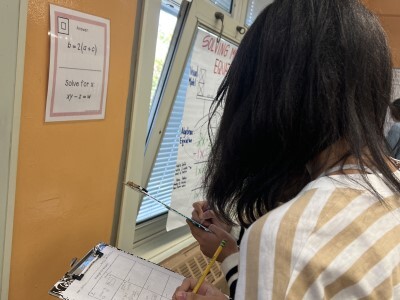Xtreme Innovation
Topics

We’ve all had the experience of truly purposeful, authentic learning and know how valuable it is. Educators are taking the best of what we know about learning, student support, effective instruction, and interpersonal skill-building to completely reimagine schools so that students experience that kind of purposeful learning all day, every day.
NGLC's latest “re-invention” challenge to secondary and postsecondary educators and innovators pushes the needle on fundamentally rethinking education itself.
Imagine a gauge for innovation in public schools—a meter that indicates the nature and intent of any given reform project’s theory of change. Everything the needle points to on the left side of the meter is about improving performance within the prevailing model of public education in the U.S. (Which is to say, the one we’ve had for the last eighty years or so.)
Everything on the right side is about challenging the model itself. These innovation initiatives presume that in order to achieve new, ambitious goals for public education (high outcomes for all students, affordably), we need to do more than fine-tune performance within the current model. We need to fundamentally re-imagine it.
Last fall, Next Generation Learning Challenges (NGLC) issued our latest of three waves of “re-invention” challenges to secondary and postsecondary educators and innovators that push the needle on that meter as far to the right as it can go. Wave III will provide $12 million in grants over the course of this year to new-model schools and college degree programs that fundamentally re-design how students learn, how schools and institutions enable that learning and allocate resources to support it, and how their approaches can multiply virally.
NGLC made it clear where applicants should locate themselves on that innovation meter. We asked for models that (among other things) would use blended, technology-enabled approaches to personalize student learning; pursue outcomes that integrate and emphasize deeper learning; replace seat-time requirements with competency; and make all of this rapidly scalable and affordable through next generation financial and expansion models.
We issued the challenge and then literally held our breath. Are there innovators out there who are ready to push this farther? The answer is yes.
To date, NGLC has announced more than $5 million in funding to innovative school developers and campus leaders that are rethinking the ways we support and engage today’s students through wholly redesigned models for personalized learning and efficiency.

Here are three observations about what they’re seeking to accomplish:
- They are completely re-imagining the learner experience. On the K-12 side, the approaches the new grantees are taking might be considered Blended Learning 2.0. All of these developers cited valuable lessons they’d learned from studying the pioneers in this space. Their schools will integrate elements of project-based, online, personalized, group, and anytime/everywhere learning, together with strong links to postsecondary education, to generate new models that stand on the shoulders of giants. Across our higher education portfolio, our funded programs represent some of the best pieces of today’s most innovative programs: competency-based pathways, flexible tuition, year-round enrollment, and success measured in transferable, recognizable skills rather than credit hours. But they are each adding their own advancements to the field, thinking about the ways they can push the model further
- They are applying technology-enabled strategies to challenge the status quo in school design. One California secondary school grantee will scrap the traditional school calendar by opening its doors to students ten hours per day, seven days per week, year-round. Students will contract individually with the school to create their own personalized schedules and conduct a substantial portion of their learning outside of the school’s walls. A New Jersey grantee will use working-world learning environments and processes, all on a technology platform like those used by business and industry today, to create learning experiences for students that connect deeply to the environment outside of school. Across our higher education portfolio, Southern New Hampshire University is utilizing a virtual and personalized Knowledge Map to help students in their Pathways Program map, measure, and track their progress on key competencies driven the 21st century needs of today’s workplace.
- They are pushing the envelope on financial modeling and scalability. These innovations, as promising as they are, will mean little if they require supports or operating conditions that are not readily scalable. NGLC grantees are thinking as deeply about these challenges as they are about their learning models, so that viable, viral scaling is embedded as a central element in their school’s DNA. They are rethinking the roles of teachers and faculty and empowering them with rich data dashboards that help instructors provide targeted, individualized instruction and support. They are utilizing open educational resources and considering the ways to share the most successful parts of their own models.
NGLC just closed our third application cycle for Wave III and will announce an additional set of grantees in the coming weeks.
These are early-stage models, of course. There is much work to be done before these innovative schools open their doors to students. But for anyone harboring even the slightest concern about whether our nation can meet its educational goals via traditional left-side-of-the-meter approaches, we’ve seen a glimpse into the future and the needle is headed in a promising direction.
To learn more about the latest group of NGLC grantees, visit the Breakthrough Models grantees page. Check back to mid-October to meet the final round of winners.
Top photo courtesy of Allison Shelley/The Verbatim Agency for American Education: Images of Teachers and Students in Action. CC-BY-NC-4.0




